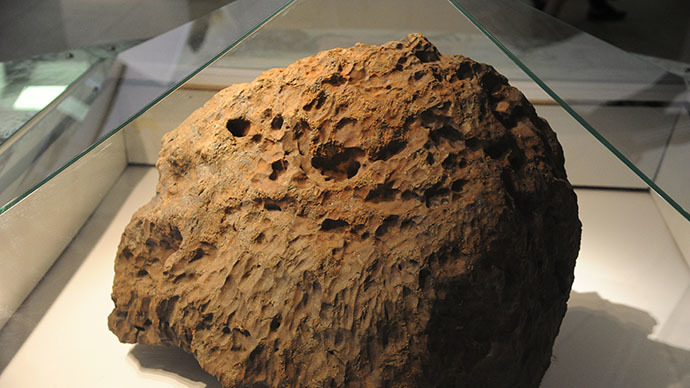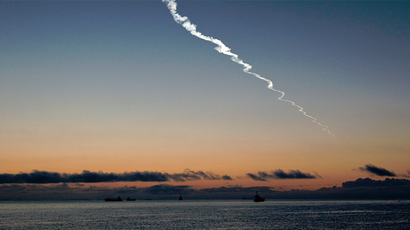Chelyabinsk meteor origins found in outer space collision

Russian scientists and their Japanese colleagues have determined that the Chelyabinsk meteor that entered Earth's atmosphere almost 60 times the speed of sound and exploded above the Russian city back in February 2013 was formed by a space collision.
A joint study of Russian researchers from the Novosibirsk University and members of Japanese academia, in their newly published study in the Scientific Reports periodical, conclude that Chelyabinsk meteor constitutes “the second largest asteroid airburst in our recorded history.”
Their study is based on the analysis of the composition of fragments of the celestial body, raised last summer from the bottom of lake Chebarkul, where parts of the meteorite fell.
“Chelyabinsk meteorite is a unique sample: it is fragments of a Near-Earth Object that actually hit the Earth and its trajectory was well-recorded,” the study says.
In particular, the researchers found that the meteorite contained a jade – green mineral that is rarely found in such samples.
“We found a clear evidence for an intense impact event: the existence of a high-pressure mineral jadeite in Chelyabinsk meteorite.”
Consequently, scientists concluded that the meteor was formed by an outer space collision as jadeite is only formed in the presence of two components – strong pressure of up to 12 GPa and high temperature of around 1700-2000° C.
Based on this analysis, researchers say the Chelyabinsk meteorite was sent towards Earth after a collision with another celestial body about 10 million years ago.
When the meteorite entered Russian territory on 15 February 2013, the light from the meteor was brighter than the Sun. It was observed over a wide area of the region with many amateur footage of the phenomenon shared over the internet.
When the 20 meters in diameter meteorite entered the atmosphere the object exploded generating a bright flash and powerful shock wave. Its blast caused havoc among local residents with around 1,500 people seeking medical treatment. In addition, some 7,200 buildings in six cities across the region were damaged.















